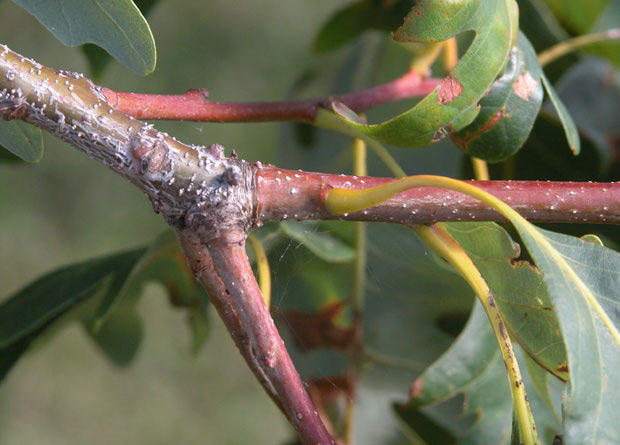Twigs for renewal
A twig is a branch's most recent ramification. It is formed during the current year's growth and lasts for only one year. By the next year, it has turned into a branch. Twigs are relatively easy to identify when young because they are a different colour from the branch on which they are growing. How many twigs are there in this photo?
The twigs on trees with deciduous (A plant part that detaches and falls.) leaves, like those growing in temperate regions, for instance, bear all the leaves. This isn't the case with evergreen (Which stays attached to the plant a long time (persistent).) trees, though, like most conifers. Their new leaves are anchored on the twigs, but their old ones are on the branches.
Herbivores often browse on twigs. Next to leaves, twigs contain the most nitrogen, an important nutrient. The thicker branches become, the lower their total nitrogen percentage. That's why some parasites that attack tree trunks grow so slowly: the mature wood they eat is not very nutritious.





